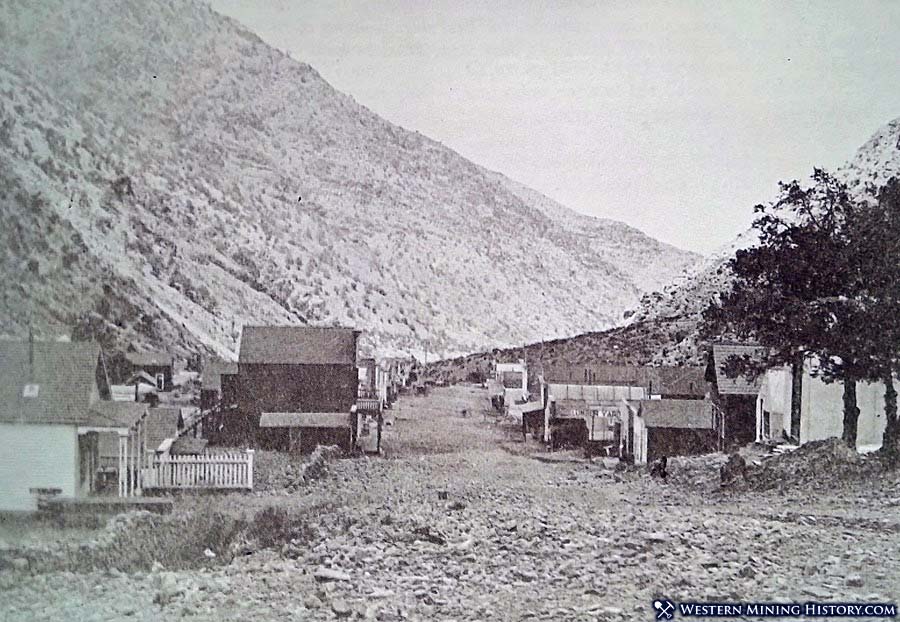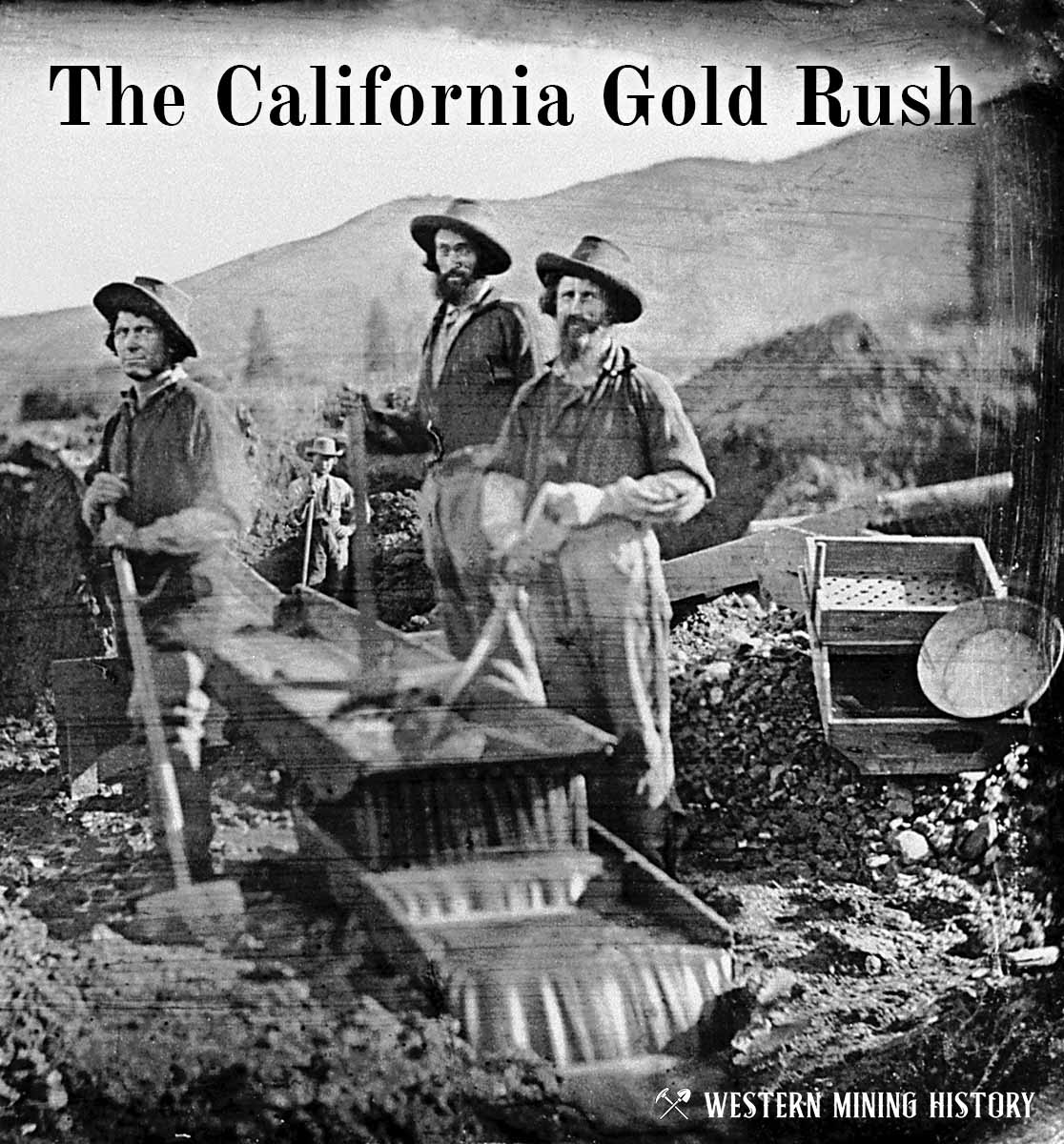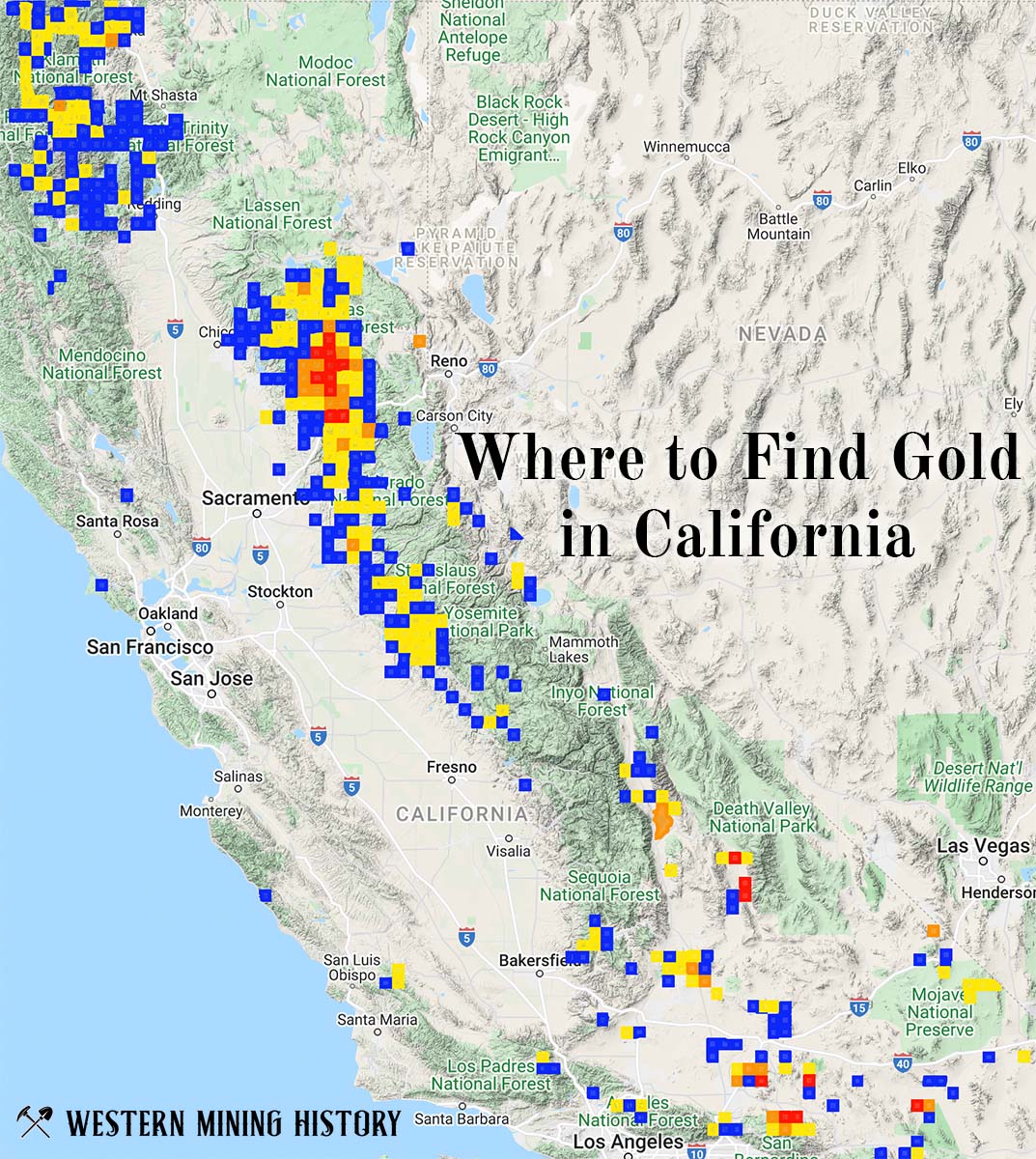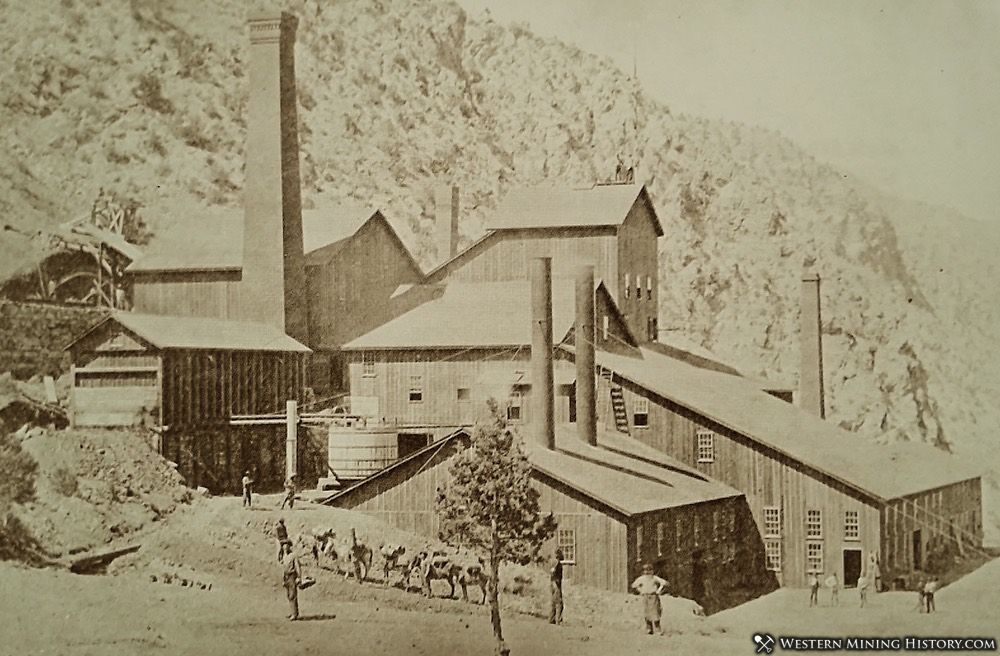Panamint City History
The Panamint City townsite lies high in Surprise Canyon, deep within the remote and rugged Panamint Range of Death Valley in southern California. In the early 1870s, the area served as a hideout for outlaws, its isolation providing refuge from the law. In 1872, one of these outlaws discovered the first silver outcrops.
By 1873, a ragtag group of prospectors and outlaws were living in caves and other makeshift shelters while working the canyon’s surface deposits on a small scale. Later that year, bags of silver ore were sent to Los Angeles in an effort to attract investors to the newly formed Panamint mining district.

Nevada Senator John P. Jones heard of the Panamint excitement and invested some of his newly acquired Comstock wealth in local claims. Along with Senator William Stewart, he was reported to have paid $350,000 for several properties and secured an additional $2 million from investors. This rush to back a remote and unproven district illustrates how the immense fortunes made on the Comstock Lode often clouded the judgment of investors.
When news spread of the investments in the remote district, a rush to the Panamint Mountains quickly followed. By early 1874, a rough and lawless settlement had taken shape, stretching nearly a mile through the upper reaches of Surprise Canyon.
Mining camps of the Old West were often established in harsh and inaccessible places, but Panamint City was exceptional even by those standards. On November 12, 1874, the Daily Alta California reported on the town’s severe location:
Panamint is fifty miles east of the summit of the Sierra Nevada, two hundred miles from Wilmington, the nearest sea port, and four thousand feet above the sea, in the midst of a desert, with a very hot Summer climate, and little wood or water in the vicinity. The expense of living must be great there, and the mines must be rich to pay people for living in the midst of such desolation.
Panamint City reached the height of its boom in late 1874, when as many as 2,000 miners, merchants, prostitutes, outlaws, and other characters called the camp home.
In the November 5, 1874 edition of the Sacramento Daily Union, the following was reported about the booming camp:
A gentleman just in from Panamint reports the district in a fever of excitement. The mines are developed sufficiently to warrant the belief that they will rival in richness the famous Virginia City mines. He says the camp now contains 700 miners, and more are arriving every day - some by the Bakersfield route, but most come by San Buenaventura, as it is the cheapest and quickest. Meals can be procured in Panamint for 75 cents and $2 for animals.
The town is filled with saloons, and gamblers are doing a splendid business. He says he saw $2,000 in one pot. A pretty good indication of good times–so old Californians say. Building lots command a high figure–$500 to $1,000, and considerable numbers are changing hands at that figure. New buildings are going up rapidly. The lead owned by Stewart, Jones & Company is said to surpass, in richness and vastness, anything ever before struck west of the Rocky Mountains.
At its peak, Panamint City had at least ten saloons, a brewery, a lumber yard, a bank, a hotel and a red light district. By 1875, the town had over fifty wooden homes.
Outlaw Gangs of the Panamint
Panamint City and the surrounding areas remained a wild and lawless area throughout the 1870s. The following articles from newspapers of the time capture some of the outlaw activity:
April 12, 1875 - Arriving passengers from Panamint report that Chavez with about twenty Mexicans, are operating on the road between Panamint and Cerro Gordo. They have laid up and robbed two men on the road within a day or two. Fifty men from Cerro Gordo are out hunting the robbers. There is great excitement at Cerro Gordo and Panamint and guards are kept out at both places.
April 23, 1876 - Information just received from Panamint: On April 20th, McDonald and Small, notorious stage and express robbers, an hour ago entered the store of Harris & Kline, drew their pistols on the clerk, and robbed the safe of $1,000 in gold coin and checks to the amount of another thousand.
The Boom is Over as Fast as it Started
In June 1875, Jones and Stewart’s twenty-stamp mill began operating. However, the ore bodies proved far less extensive than expected, and within months of the mill’s completion the Panamint district’s mining industry was already in decline.
By 1876, most of Panamint City’s residents had moved on to other mining camps. In July of that year, a flash flood swept down Surprise Canyon and destroyed much of the town—an event that gave ironic weight to the canyon’s name.
Panamint City experienced occasional revivals, including a 1925 effort with modern machinery, but the brief glory days of the district were long past. Total production is estimated at about $2.5 million.
Today, Panamint City is within the boundary of Death Valley National Park and is only accessible by a strenuous 15 mile round trip hike. The only remains are the smokestack and foundation of the mill and a few random buildings.
It All Started With The Gold Rush

The great California Gold Rush kicked off the entire saga of western mining. Read about it at The California Gold Rush.
California Gold

"Where to Find Gold in California" looks at the density of modern placer mining claims along with historical gold mining locations and mining district descriptions to determine areas of high gold discovery potential in California. Read more: Where to Find Gold in California.
